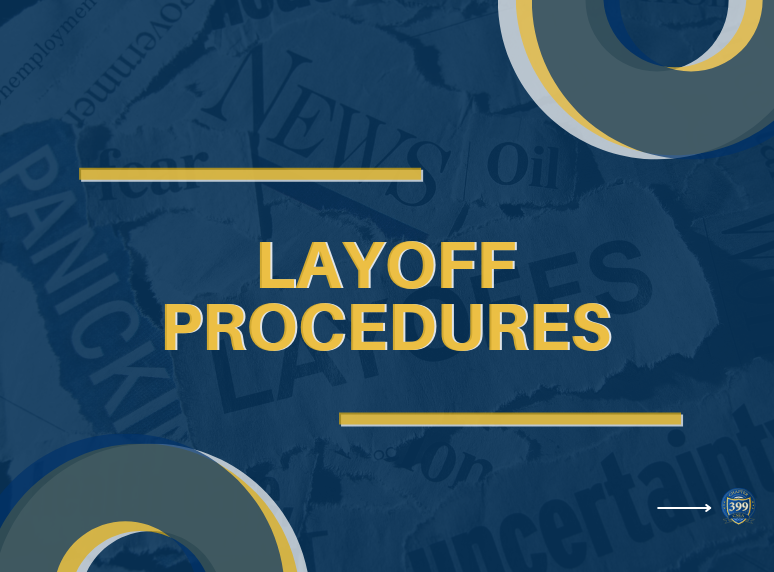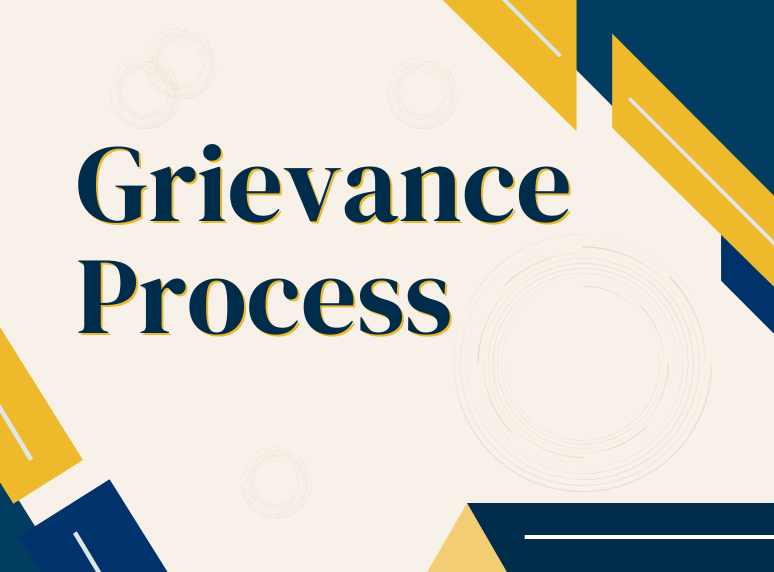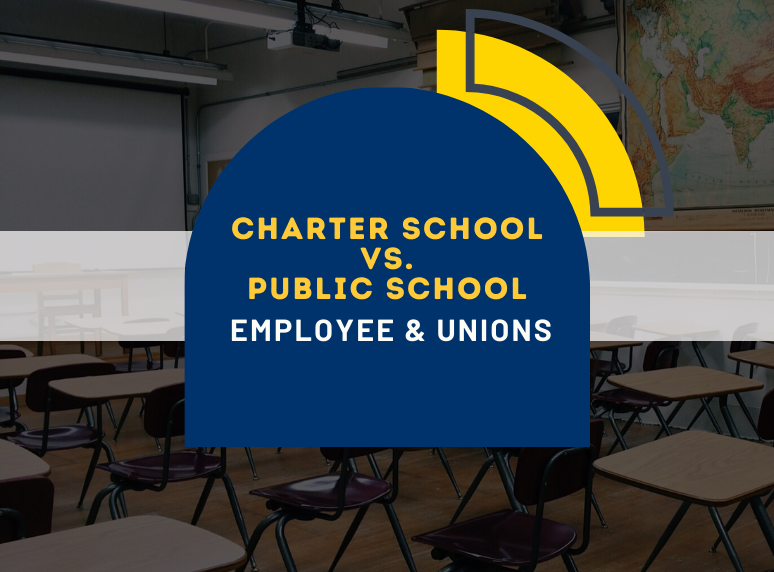Leave Benefits are the time that employees at Calexico Unified School District take off work during otherwise normal working hours which they are entitled to, by law, or by contract. This entitlement varies from company to company and can be either minimal or generous, depending on the company’s discretion.
CUSD must meet the minimum requirements for leave that are mandated by law. Furthermore, some companies may also offer additional leave as a part of their employee benefits, as an incentive for their staff.
This post will provide you with a detailed description of the different types of leaves you are entitled to take as a Calexico Unified School District employee. Read your employment contract If you want to learn more about what Calexico Unified School District Leaves. (Article XV)
What is Paid Sick Leave?
Sick leave pay is a benefit that allows employees to take time off for short or long-term health needs and be compensated for this time. Depending on the company and state laws, employees may use sick leave pay to care for themselves or an immediate family member. The paid sick leave hours are earned depending on the number of hours worked.
- Full-time (eight (8) hours a day, five (5) days a week) employees are entitled to one (1) day of paid sick leave for each month of employment.
- Employees working less than full-time, are entitled to sick leave that shall be computed on the basis of hours and days worked. Unused sick leave may be accumulated without limit.
- At the beginning of each fiscal year, the sick leave “bank” of the employee shall be increased by the number of days or hours of paid sick leave that he would normally earn in the ensuing fiscal year. An employee’s sick leave “account” shall be adjusted if a change in assignment alters the amount of sick leave earnable.
When can I use my paid sick leave?
Sick leave may be taken at any time, provided that new employees with probationary status may use only six (6) days of paid sick leave during their initial probationary period.
Pay for any days of sick leave shall be the same pay that the employee would have received if he/she had worked that day, except as provided by the Education Code for part-time personnel.
In order to receive compensation while on sick leave, the employee must notify his/her supervisor of his/her absence within the first working hour of the first day of absence, unless conditions make notification impossible. The burden of proof of impossible conditions is upon the employee.
At least one (1) day prior to his/her expected return to work, the employee shall notify his/her supervisor so that a substitute employee may be terminated. If the employee fails to notify his/ her supervisor and both the employee and the substitute report to work, the substitute is entitled to the assignment, and the employee shall not receive pay for that day.
An employee absent for five (5) working days or more shall be required to present a doctor’s statement stating the nature of his/her illness or injury and the date on which the employee is able to return to work, prior to the time of return.
When a person is on paid sick leave, he/she shall not be penalized in the event an
the authorized holiday occurs during that time.
Sick leave is not earned for the following reasons:
- Overtime working hours
- During a sick leave of absence without pay;
- Student help, temporary (provisional), emergency employee.
can the District deny paid sick leave work?
The District shall maintain appropriate absence reports and time cards. An employee who is on sick leave may not continue to receive income from the school district if he/she accepts other employment.
When an employee is on sick leave or leave of absence without pay because of illness and wishes to accept other employment, he/she must resign from the District. Accepting other employment while on sick leave, without notifying the District, may be grounds for dismissal. A request for leave of absence for reasons of health must be accompanied by permission for the release of information and a statement from the attending physician giving a case diagnosis and prognosis to the satisfaction of the District.
An employee whose record of illness appears to follow a pattern of reoccurrence for relatively minor indispositions may be made the subject of a special investigation by the administration. Disciplinary action may be taken if the findings of the investigation warrant such action.
An employee will receive District fringe benefits during all periods while in a paid status. In case of personal leave or leave without pay, the employee may maintain benefits at his/her own expense. Benefits terminate upon separation of the employee from the District.
As provided by Labor Code section 233, unit members may use up to one-half (0.5) of their annual entitlement of full-paid sick leave for the following reasons:
- for the diagnosis, care, or treatment of an existing health condition of, or preventive care for, an employee or an employee’s family member
- for an employee who is a victim of domestic violence, sexual assault, or stalking, the purpose described in Labor Code sections 230(c) and 230.1(a).
- All conditions and restrictions on the use of sick leave shall apply to the use under this section.
- This leave shall not count against the days of personal necessity, shall not accumulate from year to year, and shall come from available sick leave.
According to the Calexico Unified School District employee contract “Family member” is defined in Labor Code section 245.5 as the unit member’s child: (biological, adopted, or foster child, stepchild, legal ward, or a child whom the employee stands in loco parentis, regardless of age or dependency status), a biological, adoptive, or foster parent, stepparent, or legal guardian of an employee or the employee’s spouse, or registered domestic partner, or a person who stood in loco parentis when the employee was a minor child, a spouse, a registered domestic partner, grandparent, grandchild, or sibling.
Entitlement to Other Sick Leave
Employees who have exhausted all other forms of paid leave including, regular sick leave, compensatory time, holidays, and/or vacation, shall be entitled to one hundred (100) additional days of sick leave at 50% of the employee’s base pay.
After exhaustion of all paid leave, a permanent employee may be placed on unpaid leave upon request to and with the approval of the Board. When placed on unpaid leave, the employee shall not again become eligible for paid leave until the commencement of a new fiscal year in which he/she has rendered service. (See Section A.4.)
Transfer of Accumulated Sick Leave
Any classified employee of any school district who has been an employee of that district for a period of one (1) calendar year or more and who terminates such employment for the sole purpose of accepting a position in another school district and who subsequently accepts, within one (1) year of termination of his former employment, such position, shall have transferred with him to the second district the total amount of earned leave of absence for illness or injury to which he is entitled under Education Code Section 45202.
Termination of Sick Leave
An employee who has been placed on paid or unpaid sick leave may return to duty at any time during the leave, provided that he/she is able to resume the assigned duties and, if the leave has been for more than twenty (20) working days, provided that he/she has notified the District of his/her return at least three working days in advance.
If at the conclusion of all sick leave and additional leave granted under these rules, the employee is still unable to assume the duties of his position, the following steps must be taken:
- The employee may submit his resignation and request to be placed on the re-employment list
- The employee may make a request for a leave of absence without pay because of illness. This must be supported by a statement from his physician.
- If the employee is terminated by the Board, he/she will then be placed on a layoff reemployment list for a period of thirty-nine (39) months in the same manner as though he/she were laid off for lack of work or lack of funds.
The Catastrophic (CAT) Leave program allows employees who have exhausted their leave credits and must miss work due to a prolonged illness or injury (including that of an eligible family member), or due to a natural disaster, to request CAT leave.
CSEA Chapter 399 and the District agree to the CSEA Catastrophic Leave Bank which shall be administered by the District as outlined below.
eligibility and Contributions
Who is eligible and how to Contribute to the Catastrophic Leave Bank:
- All unit members on active duty with the District are eligible to contribute to the CSEA Catastrophic Leave Bank during the enrollment month of September of each school year.
- Participation is voluntary. Only contributors will be permitted to withdraw from the Bank.
- Unit members who elect not to join the Bank upon first becoming eligible may not participate/contribute until the next enrollment month of September.
- Days shall be contributed to the Bank and withdrawn from the Bank without regard to the daily rate of pay of the Catastrophic Leave Bank participant. Employees who are less than full-time shall contribute and withdraw on a pro-rated basis for example:
- A three-hour employee would contribute one (1) sick day leave [1 day = 3 hours] and withdraw the same).
- The contribution will be authorized by the unit member on the appropriate form provided by the District and will be valid from year to year until canceled by the unit member.
- Notice of cancellation, which shall be made on the proper form provided by the District, may be submitted at any time and the unit member shall not be eligible to draw from the Bank as of the effective date of cancellation. Sick leave previously authorized for contribution to the bank shall not be returned even if the unit member gives notice of cancellation.
- Contributions shall be made during the month of September of each school year. Unit members returning from extended leave, or new hires employed after the enrollment period will be permitted to contribute within thirty (30) calendar days of returning or beginning work. The District shall supply enrollment/contribution forms for the Catastrophic Leave Bank to all new unit members and those returning from leave.
- The annual contribution for a participating unit member each school year shall be one (1) day of sick leave. This level of contribution shall be deemed to equate to the legal minimum required by Ed. Code 44043.5.
- If the number of hours in the Bank at the beginning of a school year exceeds one thousand (1000) hours, no contribution shall be required of participating unit members. If the number of hours in the Bank during the school year is exhausted, each participant will be asked to contribute one (1) additional day if they wish to continue to participate in the Catastrophic Leave Bank. Those unit members joining the Catastrophic Leave Bank for the first time and those returning from leave wishing to participate shall be required to contribute one (1) day to the Bank.
- If a participant has no remaining sick leave at the time of the additional assessment described above, he/she need not contribute the additional day to remain a participant in the Catastrophic Leave Bank until July 1.
- Unit members who are retiring or leaving the employ of the District may contribute their unused sick leave to the Bank.
How does the withdrawal process of the Catastrophic Leave Bank work:
- Bank participants, whose sick leave is exhausted, may withdraw up to thirty (30) days per contract year from the Bank for catastrophic illness or injury that incapacitated the unit member for over ten (10) consecutive work days or incapacitates a member of the unit member’s immediate family (immediate family as used in this section shall include the following relatives of the unit member: spouse, children, parent) for over ten (10) consecutive work days which requires the unit member to take time off from work in order to care for that family member and taking extended time off work creates a financial hardship for the employee because he/she has exhausted all sick leave and other paid leave.
- If a reoccurrence or a second illness or injury incapacitates a unit member or member of the unit member’s immediate family within twelve (12) months of the first illness or injury, it shall be deemed catastrophic after five (5) consecutive workdays (i.e. a participant uses the Bank, after exhausting his sick leave, for twenty-five (25) days to care for his wife who dies of cancer. After returning to work, he suffers a heart attack. This shall be deemed a second catastrophic illness and the participant may again withdraw from the Bank after only five (5) consecutive workdays off work.
- Long-term therapy (i.e. chemotherapy, dialysis, and physical therapy) shall be treated as a catastrophic illness or injury even though it is not in increments of over ten (10) consecutive days. All other eligibility requirements will remain in effect. The participant will be eligible for withdrawal on a day-to-day basis.
- Participants must use all available paid leave before they will be eligible to withdraw from the Bank. Any participant whose family member is suffering a catastrophic illness, which is the qualifying basis for the request, may first use their accumulated regular sick leave for up to ten (10) days.
- Participants must not have received any written warnings for excessive absenteeism during the year immediately preceding the request for catastrophic leave.
- If a participant is incapacitated, applications for withdrawal may be submitted to the District by the participant’s agent or member of the participant’s family. A participant’s withdrawal from the Bank may not exceed the statutory period of thirty (30) days per contract year.
- Participants applying for a withdrawal, or extending their withdrawal, from the Bank will be required to submit a doctor’s statement indicating the nature of the illness or injury and the probable length of absence from work. The District shall keep information regarding the nature of the illness/injury confidential. A participant’s withdrawal may not exceed the statutory maximum period of thirty (30) days per contract year.
- Leave from the Bank may not be used for illness or disability that qualifies the participant for Workman’s Compensation benefits.
- When it may reasonably be presumed that the leave applicant is eligible for a Disability Award or a Retirement under PERS or, if applicable, Social Security, the District may request that the leave applicant applies for disability or retirement.
- (i) Failure of the applicant to submit a complete application, including medical information from the applicant’s physician within twenty (20) calendar days, will disqualify the applicant from further Catastrophic Leave Bank payments
- (ii) Any requests for additional information from PERS or Social Security shall be submitted within ten (10) days or the participant’s entitlement to Catastrophic Leave Bank payments will cease.
- (iii) If disability benefits are denied by PERS or Social Security, the applicant must appeal that decision, or entitlement to the Catastrophic Leave Bank shall cease.
Catastrophic Leave Bank Appeal Process
If the District denies a request for withdrawal or an extension of withdrawal, it shall notify the participant, in writing, of the reason for denial.
Catastrophic Leave Bank participants who are denied a withdrawal or whose withdrawal is not renewed or terminated may, within thirty (30) days of denial, grieve the denial, non-renewal, or termination. The participant shall be deemed the grievant. If the participant’s incapacitation does not allow participation in this appeal process, the participant’s agent or member of the family may process the grievance.
Administration of The Bank
- The District shall have the responsibility of maintaining the records of the Catastrophic Leave Bank, receiving withdrawal requests, verifying the validity of requests, approving or denying the requests, and communicating its decisions, in writing, to the participants and President of CSEA, Chapter 399.
- The District shall approve all properly submitted requests complying with the terms of this section. Withdrawals may not be denied on the basis of the type of illness or disability, as otherwise outlined in this Contract.
- Applications shall be reviewed and decisions of the District reported to the applicant, in writing, within ten (10) workdays of receipt of the application. The District shall keep all records confidential and shall not disclose the nature of the illness except as is necessary to process the request for withdrawal and defend against any appeals of a denial.
- By the 5th day of October of each school year, the District shall notify CSEA Chapter 399 of the following:
- (i) The total number of accumulated hours in the Bank as of June 30th of the previous school year.
- (ii) The number of hours contributed by unit members for the current school year.
- (iii) The names of participating unit members.
- (iv) The total number of hours available in the Bank.
- (v) The total number of payout hours available in the Bank.
- By the tenth (10th) day of each January and July, the District shall notify CSEA Chapter 399 of the following:
- (i) The names of any additional unit members who have joined in accordance with section 2.
- (ii) The names of any unit members who have canceled participation in accordance with section 2.
- (iii) The total number of hours in the bank at the beginning of the previous month.
- (iv) The total number of hours awarded during the previous month and to whom they were awarded.
- (v) The total number of hours remaining in the Bank on the last day of the month.
- (vi) The total number of hours added by new members.
- Any dispute between CSEA and the District as to the accounting of the Catastrophic Leave Bank hours shall be settled through the normal grievance procedures as outlined by the union contract.
- If the Catastrophic Leave Bank is terminated for any reason, the hours remaining in the Bank shall be returned to the then-current members of the Bank proportionately.
Industrial Accident and Industrial Illness Leave
Leaves resulting from an industrial accident or industrial illness shall be granted in accordance with the provisions of Education Code Sections 45192 and 45199 and this rule.
An employee in the classified service, who is absent from duty because of an illness or injury defined as an industrial accident or industrial illness under provisions of the Workman’s Compensation Insurance Law, shall be granted paid industrial accident leave for each such accident or illness while receiving temporary disability benefits from workmen’s compensation provided that the illness or injury was related to the performance of his/her duties. Such paid industrial accident or illness leave shall not be for more than 60 working days.
The District will make reasonable efforts to accommodate unit members on industrial accident leave with light-duty assignments as required by law.
would I get paid during an industrial accident leave?
- Paid industrial accident leave shall be granted to employees on probationary or
permanent status.
- Paid industrial accident leave shall be reduced by one day for each day of authorized absence regardless of the temporary disability allowance made under the workmen’s compensation. Days absent while on paid industrial accident leave shall not be deducted from the number of days of paid sick leave to which an employee may be entitled.
- If the employee is still unable to return to duty after exhausting paid industrial accident leave, the employee shall be placed on paid illness leave if he/she is eligible thereof. Accumulated illness leave will be reduced only in the amount necessary to provide a full day’s wages or salary, as indicated in the employee’s assignment, when added to disability benefits derived from workmen’s compensation.
- After all paid illness leave has been exhausted following a paid industrial accident leaves, an employee may choose to receive payments from accrued vacation time to the extent necessary to make up the employee’s regular salary when receiving temporary disability allowance without penalties from the workmen’s compensation insurance company.
- After the expiration of all paid leave privileges, the appointing authority may place the employee on an industrial accident leave without pay. The total time of all leave benefits provided under this rule, including unpaid industrial accident leave, shall not exceed thirty-six (36) months for any one industrial accident or industrial illness.
- Upon return to service from any paid or unpaid leave resulting from an industrial accident or industrial illness, an employee shall be assigned to a position in his/her former class ahead of any employee with a lesser amount of seniority. If no vacancy exists in his/her former class, he/she may displace the most recently appointed employee in the class with less seniority. If an employee’s former class has ceased to exist, the employee may be reassigned or placed on a suitable reemployment list.
- An employee returning from such paid or unpaid leave of absence shall not have any loss or gain in status or benefits other than that which is specifically provided in applicable provisions of the Education Code. An employee shall continue to receive seniority credit for all purposes while on such a paid or unpaid leave of absence.
- When all paid or unpaid leaves of absence have been exhausted following an industrial accident or industrial illness, the employee’s name shall be placed on the reemployment list for the class from which he/she was on leave, for a period not to exceed thirty-nine (39) months, if not placed in another position.
- An employee who fails to accept an appropriate assignment after being medically approved therefore shall be removed from the reemployment list. An appropriate assignment is defined as an assignment to the employee’s former class, in his/her former status and time basis, and in assignment areas in which the employee has himself/herself available. Employees removed from a reemployment list under this rule may appeal the removal to the Personnel Commission.
- While an employee is on any paid leave resulting from an industrial accident or industrial illness, the employee’s salary paid by the District shall not, when added to a normal temporary disability allowance award, exceed the employee’s regular salary.
- A permanent employee’s regular salary is computed on the basis of the number of hours and days in his basic daily assignments.
- An employee who is not permanent shall have his/her regular salary computed as the average number of hours per month in which the employee status is during the preceding year.
- An employee who received a shift or other salary differential shall lose the advantage of the differential after ten (10) consecutive days of paid industrial accident leave for any one accident or illness.
- During all paid leaves resulting from an industrial accident or industrial illness, the employee shall endorse to the District all wage-loss benefit checks received under State Workmen’s Compensation Insurance laws.
- The District shall issues to the employee appropriate warrants for payment of wages, loss of benefits, salary, and/or leave benefits and shall deduct normal retirement and other authorized contributions.
- Final allowance for permanent industrial disability settlements shall not be subject to remittance to the District under this rule.
Every person (permanent, probationary, provisional (temporary), or limited-term)
employed in the classified service of this District shall be granted necessary leave of absence, not to exceed a standard three (3) days or five (5) days if more than two hundred (200) miles travel one way is required, on account of the death of any member of his/her immediate family.
No deduction shall be made from the salary of such employee nor shall such leave be deducted from leave granted by other sections of the Education Code or as may be provided by the District.
Member of immediate family means mother, father, mother-in-law, father-in-law,
grandmother or grandfather of the employee or the employee’s spouse, and the spouse, son, son-in-law, daughter, daughter-in-law, grandchild, brother or sister of the employee, or any person living in the immediate household of the employee.
*For additional Bereavement Leave refer to Section P – Personal Necessity Leave.
Jury Duty and Witness Leave
Leave of absence for jury service shall be granted to any employee who has been
officially summoned to jury duty in local, state, or federal court. Leave shall be granted for the period of jury service. The employee shall receive full pay while on leave provided that the jury service fee for such leave is assigned to and the subpoena of court certification is filed with the District. Request for jury service leave should be made by presenting the official court summons to jury service to the supervisor.
Leave of absence to serve as a witness in a court case shall be granted an employee when he has been served a subpoena to appear as a witness, not as the litigant in the case. The length of leave granted shall be for the number of days in attendance in court as certified by the clerk or other authorized officer of the court.
The employee shall receive full pay during the leave period, provided that the witness fee for such leave is assigned to and the subpoena or court certification is filed with the School District. Request for leave of absence to serve as a witness should be made by presenting the official court summons to the supervisor.
The jury service fee and witness fee referred to in A and B, respectively, do not include reimbursement for transportation expenses.
Every employee in the classified service shall be permitted to be absent from his/her duties during working hours in order to take any examination for promotion in the District without deduction of pay or other penalties, provided that he/she gives adequate prior notice to his/her immediate supervisor.
Military leave of absence shall be granted and compensated in accordance with the Military and Veteran’s Code, Sections 389 and 395.
Leave of Absence Without Pay
Leave of Absence without pay may be granted to a permanent employee, upon written, request subject to the following restrictions:
- Leave of absence without pay may be granted for any period not exceeding one (1) year, except that leave of absence for military service shall be granted as provided by the Education Code and Military and Veterans Code.
- The granting of a leave of absence without pay gives to the employee the right to return to his/her position at the expiration of his/her leave of absence, provided that he/she is physically and legally capable of performing the duties. The position may be filled only for the duration of the leave, and the employee so assigned must be reassigned upon completion of the leave.
The District may, for a good cause, cancel any leave of absence by giving the absent employee due notification. Such notification shall be of sufficient time to permit the employee to return, however, in no case shall the amount of time be less than three (3) days.
- An employee may make a written request to his/her Supervisor to return to work prior to the expiration date of the leave.
- Failure to report for duty within five (5) working days after a leave has been canceled or expires shall be considered abandonment of the position and the employee may be terminated by the Board.
An employee who is granted an unpaid leave of absence for an academic or fiscal year shall notify the Superintendent, in writing, of his/her intention to return to his/her position, either on July 1st or on the opening of the academic year, by April 15th of the same year.
- Failure to notify the Superintendent of his/her intention to return shall be interpreted as intending not to return and could lead to termination (L, Section 4).
If the employee’s classification has been abolished during the employee’s absence, he/she shall be laid off for lack of work and placed on the reemployment list for the class, effective on the date of termination of the leave, and shall be entitled to all “layoff” benefits. He/She may be returned to a vacant position, for which he/she is qualified, in a class at the same or lower salary level.
Employees returning from leave may be required to have a health examination by a doctor specified by the District, with the cost met by the District.
Factors to be considered in granting a leave request and for determining the appropriate length of the leave include, but shall not be limited to:
- Length of service with District
- Work performance
- Attendance record
- Length of request
- Reason(s) for leave
- Availability of other leave; and
- Reason(s) for denial of leave shall be furnished to the employee in writing.
Leave to Serve in an Exempt, Temporary or Limited-Term Position
Any permanent classified employee who accepts a regular assignment within the District to an exempt, temporary, or limited-term position shall, during such assignment, be considered for status purposes as serving his/her regular position, and such assignment shall be considered separation from service.
The employee may, with the approval of the appointing authority, voluntarily return to his/her position, or to a position in the class of his/her permanent status, prior to the completion of service in an exempt, temporary, or limited-term position. Failure to complete the required service, unless approved as specified herein, will constitute abandonment of position and may be grounds for disciplinary action by the appointing authority.
Pregnancy Disability Leave
Leaves of absence shall be provided for any classified employee required to be absent from duties because of disability caused by pregnancy, miscarriage, childbirth, and related medical conditions.
A unit member disabled by pregnancy, childbirth, and related medical conditions shall be entitled to use sick leave, vacation, and other paid and unpaid leaves, under the same terms and conditions as employees suffering from other temporary disabilities. If after exhausting all available leaves, paid and unpaid, a unit member continues to be disabled by pregnancy or childbirth, she may request additional leave.
The period of leave for disability caused by pregnancy, childbirth, and related medical conditions shall be determined by the unit member and her physician. The employee shall submit a request for pregnancy disability. Where medically possible, the employee will submit the request not less than thirty (30) days prior to the commencement of the leave. The request shall be accompanied by the attending physician’s statement stating that the employee is medically unable to perform her duties and the anticipated beginning and ending dates of the leave.
A unit member returning to work after a pregnancy or childbirth-related disability leave shall provide a doctor’s verification of the ability to return to work.
Pregnancy disability leave shall not be used for childbirth preparation or child bonding. An employee who wishes to remain absent from duties beyond the period of disability may request child bonding leave.
Paid Parental/Child Bonding Leave
As provided by Education Code section 45196.1, employees shall be entitled to parental leave as set forth in this section.
- For purposes of this section, “parental leave” shall be defined as leave for reason of the birth of the employee’s child, or the placement of a child with the employee for adoption or foster care.
- Employees shall be entitled to use all current and accumulated sick leaves for parental leave, for a period of up to twelve (12) workweeks.
- When an employee has exhausted all current and accumulated sick leave and continues to be absent on account of parental (child bonding) leave under the California Family Rights Act (CFRA; Government Code section 12945.2), he/she shall be entitled to 50% pay for any of the remaining twelve (12) workweek period. Such 50% payment shall be paid as set forth in section C (Entitlement to Other Sick Leave) above but shall not count against the leave entitlement set forth in that section. In order to use 50% pay, the employee must be eligible for leave under the CFRA, except that he/she is not required to have worked 1,250 hours in the twelve (12) months immediately preceding the leave.
- Any leave taken under this section shall count against any entitlement to child bonding leave under the CFRA and the aggregate amount of leave taken under this section and CFRA shall not exceed twelve (12) workweeks in any twelve (12) month period.
- Employees shall not be entitled to more than one (1) twelve (12) week period for parental leave in any twelve (12) month period.
- Unit members shall give thirty (30) calendar days’ notice of parental leave. Parental leave under this section shall be taken in increments of at least two (2) weeks’ duration, except on two (2) occasions leave can be of shorter duration.
Any days of absence for illness or injury earned pursuant to Section A may be used by the employee, at his/her election, in cases of personal necessity. Such leave shall not be accrued and will be charged against an employee’s sick leave. No such absence in excess of days earned may be used in any school year and only for the following exceptions:
- Bereavement: Death of a member of an employee’s immediate family when additional leave is required beyond that provided in Section H.
- Accident: An accident involving his/her person or property, or the person or property of a member of his/her immediate family.
- Court Appearance: Appearance in any court or before any administrative tribunal as a litigant or party to the action.
- Family Illness: Illness or injury of a serious nature, to any member of the immediate family, and of such nature as to require the presence of the employee during his working day.
- Other
- Imminent serious danger to the home of an employee (such as flood, fire,
earthquake, rioting. etc.), which under the circumstances the employee cannot
reasonably be expected to disregard, and which requires the attention of the
employee during his assigned hours of service.
- Emergency leave to conduct personal business that cannot be transacted outside of assigned working hours may be granted by the Board, retroactively if necessary, upon written request by the employee.
Limitations and Conditions of Personal Necessity Leave
- Relationship to Personal Sick Leave
- The total number of days allowed in one school year shall not exceed seven (7) and are chargeable to personal sick leave.
- The days allowed shall be deducted from, and may not exceed, the number of full days of illness or injury leaves to which the employee is entitled under the sick leave policy.
- An employee must reimburse the District for any overuse of sick leave.
- Non-Accumulative — Personal necessity leave shall be non-accumulative.
- Personal necessity leave shall not be granted during a scheduled vacation or a leave of absence.
If a voter does not have sufficient time outside of working hours to vote at a statewide election, the voter may, without loss of pay, take off enough working time which when added to the voting time available outside of working hours will enable the voter to vote.
No more than two hours of the time taken off for voting shall be without loss of pay. The time off for voting shall be only at the beginning or end of the regular working shift, whichever allows the freest time for voting and the least time off from the regular working shift, unless otherwise mutually agreed.
If the employee on the third (3rd) working day prior to the day of the election, knows or has reason to believe that time off will be necessary to be able to vote on election day, the employee shall give the employer at least two (2) working days’ notice that time off for voting is desired, in accordance with the provisions of this section. (State Elections Code Section 14350).
“In Lieu” time may be approved by the supervisor for employees under their jurisdiction for verified work in excess of their scheduled hours. “In Lieu” time should be taken within the pay period and may not be accumulated unless it is approved by the supervisors. Immediate supervisors are responsible for keeping “In Lieu” time to a minimum.
Leave of Absence for Study
Every regular classified employee who has completed seven (7) consecutive years of service in regular status with the District shall be eligible to apply for a leave of absence for study purposes. The granting of such leave shall be entirely discretionary with the District. When a study leave has been authorized and taken, an additional seven (7) years of service, after return to duty from the last leave, must be completed before another study leave may be granted.
Study leave can be for any period of time not to exceed one (1) year and may be taken in any time increments as approved by the Board, but must be completed within three (3) years after the initial part of the leave was commenced. If the leave is not continuous, the service performed between the leave intervals shall be credited toward future study-leave eligibility.
Any leave granted and taken under this rule shall not constitute a break in service for any purpose, but the leave time shall not count toward eligibility for future study leave.
The employee must file an application with the Board for a leave of absence under this rule and must outline:
- His/Her work history with the District (e.g., positions held and length of service in each).
- Length of leave requested and the time period in which the leave will be completed if granted.
- The purpose for which the leave is requested. The application must include the complete course of study to be pursued, the institution giving the course, the costs involved, the degree or credits to be granted, and other pertinent data.
- Amount of compensation requested while on leave.
- Service, if any, to be performed by the employee for the District during the leave.
- The benefits to be derived by the District from the granting of the leave.
- The willingness of the employee to provide a bond to the District as required by law.
- Agreement by the employee that he/she will serve the District for at least two (2) years after termination of the leave.
- Willingness to provide the District evidence of satisfactory study progress at agreed intervals during the leave. Failure to provide such evidence, or to make satisfactory progress may, at the option of the District, result in immediate cancellation of the leave.
- Agreement by the employee that he/she will report any employment during the leave to the Personnel Commission Director, who shall determine whether a conflict exists with the purpose of the leave.
Compensation shall be paid as follows:
- If the employee does not provide a bond, determined satisfactory by the District and provide a written statement indicating that he/she will serve at least two (2) years with the District upon return from leave, the agreed-to compensation shall be paid in two equal annual installments during the first two (2) years of service to the District following return to duty after termination of the leave.
- If the employee provides the required bond and submits a written document, approved by the Board, the employee shall be paid the agreed-upon compensation in the same manner as if he/she were in active service with the District. If the employee fails to complete two (2) years of service for the District following return from leave, except as provided below, he/she may be required to refund to the District a pro-rata portion of any compensation received while on leave.
- If an employee has provided a bond and written agreement and fails to complete the required two (2) years of service because of his/her death or physical or mental disability, the bond and conditions of the agreement shall be deemed satisfied in the same manner as if the required service had been performed.
Factors to be considered in granting a leave request and for determining the appropriate length of the leave includes, but shall not be limited to:
- Length of service with District
- Work performance
- Attendance record
- Length of request
- Reason(s) for leave
- Availability of other leave
- Reason(s) for denial of leave shall be furnished to the employee in writing.
Leave of Absence for Retraining
In the event that the Board contemplates the abolition of positions in the service and the creation of new positions because of automation, technological improvements, or for any other reason, it may provide for the retraining of displaced employees in accordance with this rule.
To be eligible for retraining leave, an employee must:
- Have served at least three (3) years in the District.
- Be serving in a position that the District contemplates abolishing, or
- Show that the retraining will clearly benefit the District.
- Indicate a willingness to undergo the prescribed training program.
- Indicate a willingness to serve the District for at least two (2) years after successful completion of the retraining program.
The District shall prescribe the retraining program and may provide the program
internally or designate the institution or place where the program is to be provided.
The employee shall be considered a permanent employee for all purposes during the period of the retraining program and shall receive his/her normal compensation and benefits. The Board may prescribe duties to be performed by the employee on behalf of the District during retraining leave or the employee may be relieved of all duties during retraining leave.
The District shall provide for reasonable expenses necessary for the prescribed retraining but may recover costs from the employee if he/she fails to complete the prescribed retraining program.
The District may establish retraining programs for purposes other than outlined in this rule and grant leaves of absence for retraining in the same manner as for study leaves of absence, except that the three-year service requirements shall prevail. Such programs must be endorsed by the Commission and must be available to all qualified employees of the District, except that approval for such leave shall be discretionary with the Board.
CUSD must meet the minimum requirements for leave that are mandated by law. Additionally, companies may offer additional leave as a part of their employee benefits. CUSD employees are entitled to various leaves and should refer to their employment contract (Article XV) for more information.
For Vacation time off visit the post on CUSD Vacation Benefits










